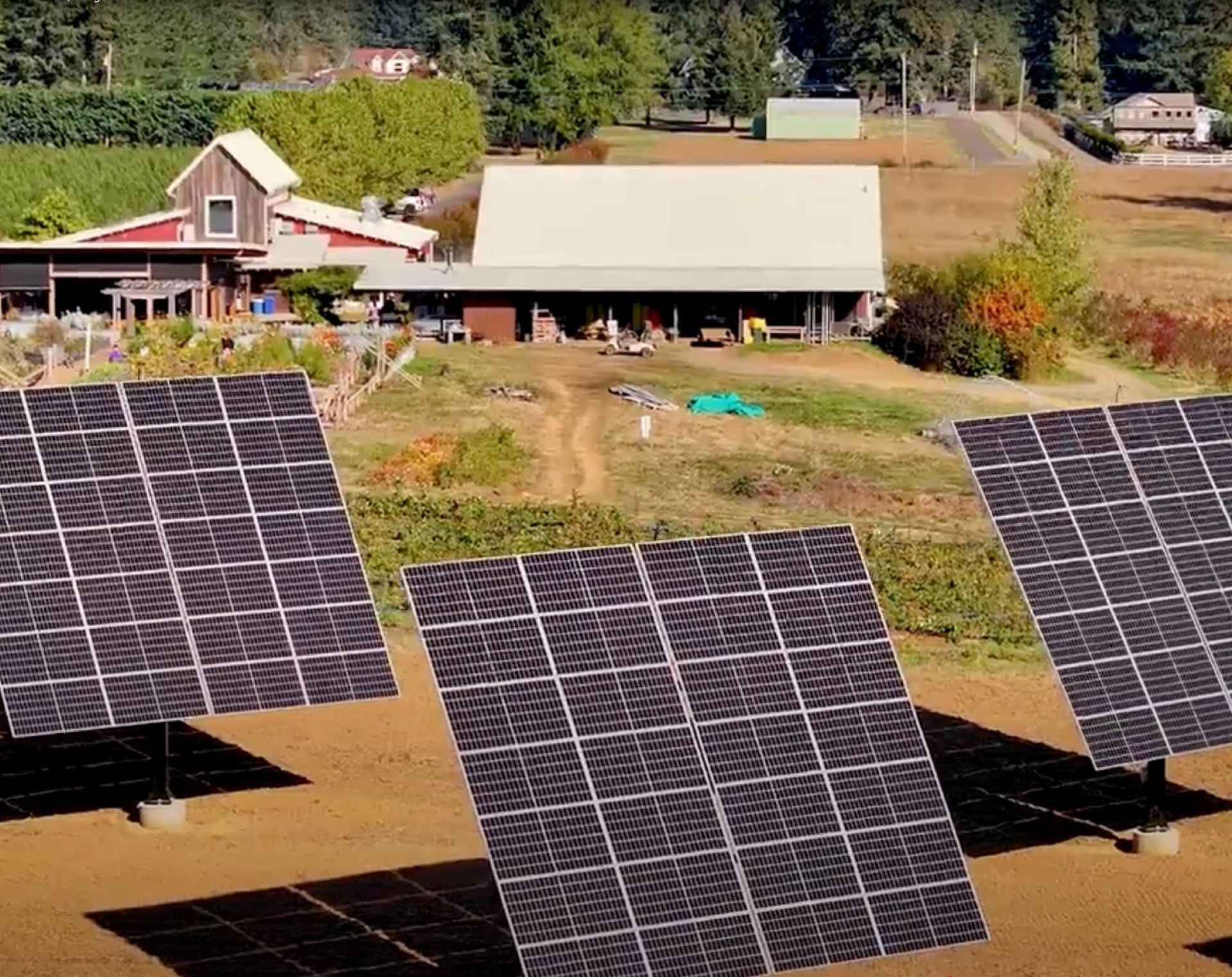Maximizing Energy Yield with Elevated Dual-Axis Solar Trackers in the Southeast
Understanding the Role of Solar Trackers in Clean Energy
Solar energy is becoming an increasingly important component of the global energy mix. To maximize the efficiency of solar panels, it's essential to optimize their exposure to sunlight throughout the day. This is where solar trackers come into play. Unlike fixed solar panels, solar trackers can adjust their orientation to follow the sun's path, thus increasing energy yield.
There are two primary types of solar trackers: single-axis and dual-axis. Single-axis trackers move along one axis, usually oriented north to south, while dual-axis trackers adjust both north-south and east-west orientations, allowing for maximum sun exposure.

Benefits of Dual-Axis Solar Trackers
Dual-axis solar trackers offer several advantages over their single-axis counterparts. First and foremost, they provide a significant increase in energy yield. By following the sun more precisely, they can generate up to 40% more electricity compared to fixed systems. This makes dual-axis trackers particularly beneficial in areas with high solar irradiance.
Moreover, dual-axis trackers enhance the overall efficiency of solar systems by reducing the angle of incidence between the sunlight and the solar panel surface. This ensures that panels capture the maximum amount of solar energy throughout the day, even during the early mornings and late afternoons when the sun is lower in the sky.

Factors to Consider When Implementing Dual-Axis Trackers
Solar power is quickly becoming a cornerstone of renewable energy across the Southeast from Georgia and South Carolina to North Carolina and Florida. With rising energy costs and increased demand for sustainable infrastructure, maximizing solar output is critical. One of the most effective ways to increase solar panel efficiency is by using solar tracking systems, particularly elevated dual-axis solar trackers.
Unlike traditional fixed solar panels that remain stationary, solar trackers automatically adjust to follow the sun’s path throughout the day. This dynamic positioning allows for increased sunlight absorption and improved power generation crucial for regions with variable weather and high energy demands like the Southeast.
Types of Solar Tracking Systems
There are two main categories of solar trackers:
- Single-Axis Trackers: These rotate on one axis, typically north to south, adjusting for the sun’s east-west movement.
- Dual-Axis Trackers: These adjust on both horizontal and vertical axes (east-west and north-south), providing full daily sun tracking and increased exposure.
In Southeast states where solar irradiance is high, dual-axis tracking systems can boost solar power output by up to 40% compared to fixed installations (source: NREL).
Key Advantages of Dual-Axis Solar Trackers in the Southeast
1. Greater Solar Energy Yield
By maintaining a perpendicular angle to the sun’s rays throughout the day and seasons, dual-axis trackers significantly outperform both fixed and single-axis systems in terms of energy generation.
2. Ideal for High-Irradiance Regions
Georgia, the Carolinas, and parts of northern Florida are among the top-performing regions for solar energy in the eastern U.S. Dual-axis trackers thrive here, delivering consistent performance and quick return on investment.
3. Reduced Angle of Incidence
These trackers minimize the angle at which sunlight hits the panels, even during sunrise and sunset, increasing efficiency during peak and off-peak hours.
Considerations for Implementation
While elevated dual-axis trackers offer compelling energy benefits, there are a few considerations for commercial or municipal projects:
- Upfront Cost: Higher initial investment compared to fixed or single-axis systems. However, this is often offset by faster ROI due to higher output.
- Maintenance Requirements: Because of their moving parts, dual-axis systems require routine checks. Partnering with a trusted solar installer in the Southeast is essential.
- Space and Foundation: Elevated designs provide ground clearance, which helps reduce shading and allows for under-panel use (ideal for agrivoltaics or stormwater control), but they do require strong anchoring and site engineering.
Site Suitability and Professional Installation
Dual-axis trackers work best on flat or slightly sloped terrain with minimal obstructions like trees or buildings. Solar developers and property owners should consider: - Local sun path and weather conditions (e.g., summer heat, occasional hurricanes)
- Soil conditions for tracker foundation installation
- Access to grid infrastructure and storage systems (especially in rural areas)
Hiring certified installers familiar with Southeast climate conditions ensures your system is optimized for long-term durability and efficiency.
Sustainability and Environmental Benefits
Using dual-axis trackers means generating more power with fewer panels. That translates into:
- Lower land use per megawatt
- Reduced material costs
- Smaller environmental footprint
- Increased energy independence in underserved or rural communities
This makes them a perfect fit for schools, municipal buildings, and commercial campuses focused on energy resilience in the South.
The Future of Solar Tracking Technology
Emerging innovations are making solar trackers smarter and more resilient. Expect features like:
- AI-optimized tracking algorithms that adjust in real-time to cloud cover
- Remote diagnostics and predictive maintenance
- Improved motor durability and reduced energy consumption
As clean energy goals advance in Georgia, South Carolina, and North Carolina, dual-axis solar trackers will play a crucial role in commercial solar system design, helping the Southeast become a leader in sustainable power.
Final Thoughts: Is a Dual-Axis Tracker Right for You?
If your business, city, or school district is exploring commercial solar energy in the Southeast, elevated dual-axis solar trackers could offer a significant performance edge. Their ability to maximize sunlight, reduce land use, and increase ROI make them an ideal solution for forward-thinking energy projects.
For tailored advice on deploying solar tracking systems across Georgia, North Carolina, or South Carolina, contact a regional solar development expert or sustainability consultant who understands the local market, incentives, and installation nuances.
